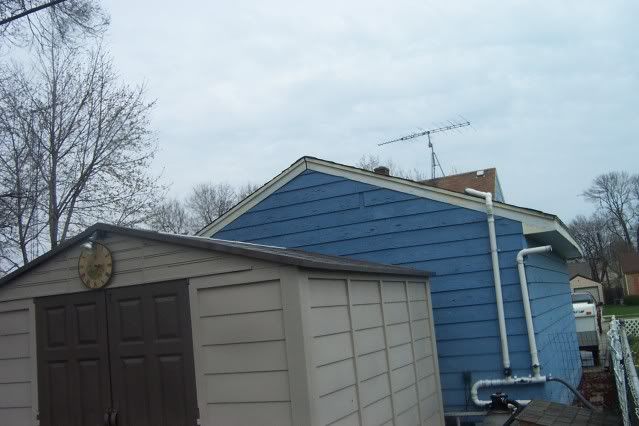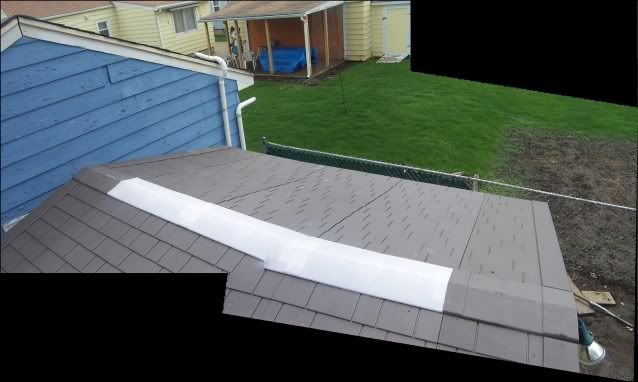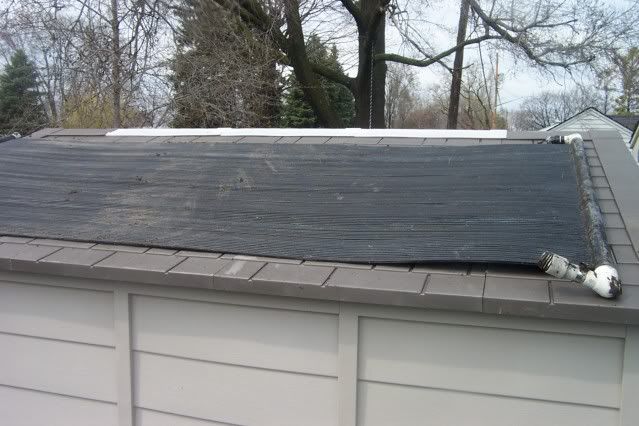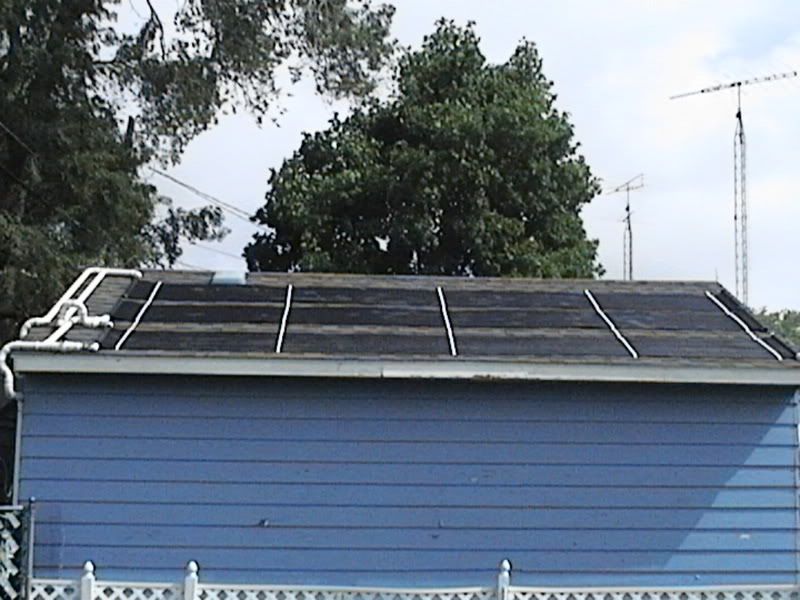Currently I have 3 solar panels on my garage roof, all of them 2x20. One is a SunHeater brand panel with the inlet and outlet on the same side. The other two are SunGrabber panels with Inlet and outlet on opposite sides. Last summer I had the inlet and return piping all on the same side. The Sunheater was on it's own, and the 2 SunGrabber panels were in series.
We just went and picked up another panel that I found on Craigslist for $40.00. It's a 4x10 Sunheater(inlet and outlet on the same side. I was just outside measuring and determined they won't all fit on the garage. The 4x10 panel will have to go on the shed which sits right next to the garage, but is about 3 1/2ft lower. This solar setup gives me three different types of panels, at two different elevations.
I'm thinking of drilling out the disc in the header of the 2x20 SunHeater panel so it's like the SunGrabbers. Then I'll plumb then all in Parallel so the flow is fairly even between the three panels on the roof.
The panel on the shed will be Tee'd off the input pipe where it runs vertically up the garage wall. I'm going to put a valve here so I can adjust the flow if necessary. The return from this panel will then run up and meet the return pipe for the panels on the garage roof at the highest point. Is this part necessary, or can I just run it to the vertical section of the return pipe on the garage wall? I'm thinking of putting a valve on the input for all of the panels. I've already got one on the 2x20 SunHeater, and the 4x10 SunHeater came with it's own, so I'd only have to add two more.
The biggest problem I can see here will be getting the all of the panels to have an even flow rate, any tricks to this one?
Any and all thoughts, comments, ideas, questions, etc. are very welcome!
Here are some pics...
This shows the plumbing(right is TO solar, left is return FROM solar), the garage, and the shed.

Shows shed and garage from the shed.

Shed with 4x10 laying on it.

Solar panel setup from last year. I might change the piping on the roof for it though, opinions on this?

Thanks,
Adam
We just went and picked up another panel that I found on Craigslist for $40.00. It's a 4x10 Sunheater(inlet and outlet on the same side. I was just outside measuring and determined they won't all fit on the garage. The 4x10 panel will have to go on the shed which sits right next to the garage, but is about 3 1/2ft lower. This solar setup gives me three different types of panels, at two different elevations.
I'm thinking of drilling out the disc in the header of the 2x20 SunHeater panel so it's like the SunGrabbers. Then I'll plumb then all in Parallel so the flow is fairly even between the three panels on the roof.
The panel on the shed will be Tee'd off the input pipe where it runs vertically up the garage wall. I'm going to put a valve here so I can adjust the flow if necessary. The return from this panel will then run up and meet the return pipe for the panels on the garage roof at the highest point. Is this part necessary, or can I just run it to the vertical section of the return pipe on the garage wall? I'm thinking of putting a valve on the input for all of the panels. I've already got one on the 2x20 SunHeater, and the 4x10 SunHeater came with it's own, so I'd only have to add two more.
The biggest problem I can see here will be getting the all of the panels to have an even flow rate, any tricks to this one?
Any and all thoughts, comments, ideas, questions, etc. are very welcome!
Here are some pics...
This shows the plumbing(right is TO solar, left is return FROM solar), the garage, and the shed.

Shows shed and garage from the shed.

Shed with 4x10 laying on it.

Solar panel setup from last year. I might change the piping on the roof for it though, opinions on this?

Thanks,
Adam


